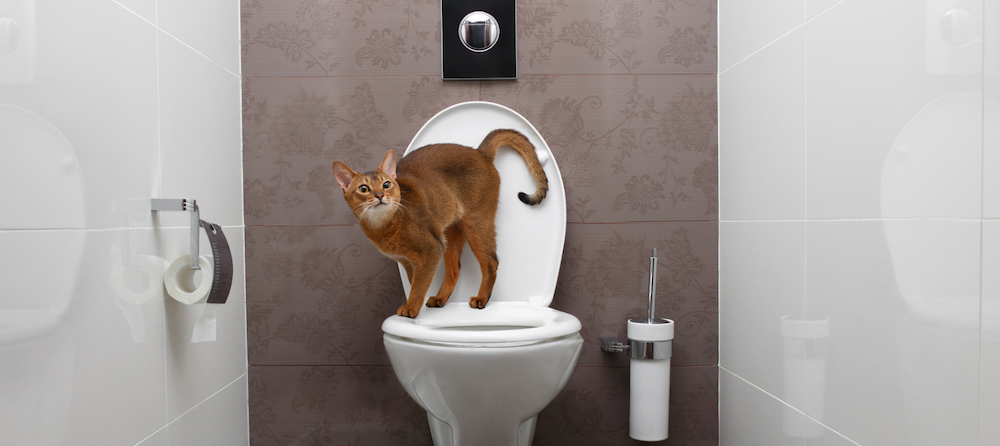Avoid Plumbing Problems: Don't Flush Cat Poop Down Your Toilet - Professional Guidance
Avoid Plumbing Problems: Don't Flush Cat Poop Down Your Toilet - Professional Guidance
Blog Article
Almost everyone maintains their own unique conception with regards to Can You Flush Cat Poop Down The Toilet?.

Intro
As cat owners, it's important to bear in mind how we deal with our feline pals' waste. While it may appear hassle-free to purge cat poop down the toilet, this practice can have harmful repercussions for both the atmosphere and human health and wellness.
Ecological Impact
Purging feline poop introduces unsafe virus and bloodsuckers right into the water, presenting a substantial threat to marine ecological communities. These pollutants can adversely affect marine life and compromise water quality.
Health Risks
In addition to environmental concerns, purging pet cat waste can additionally present health and wellness risks to humans. Pet cat feces might consist of Toxoplasma gondii, a bloodsucker that can trigger toxoplasmosis-- a potentially severe health problem, especially for pregnant women and people with damaged immune systems.
Alternatives to Flushing
Fortunately, there are more secure and a lot more accountable means to take care of feline poop. Consider the complying with options:
1. Scoop and Dispose in Trash
The most usual technique of dealing with cat poop is to scoop it right into a naturally degradable bag and throw it in the garbage. Make sure to use a specialized trash inside story and throw away the waste quickly.
2. Use Biodegradable Litter
Go with biodegradable pet cat clutter made from materials such as corn or wheat. These clutters are eco-friendly and can be securely thrown away in the trash.
3. Hide in the Yard
If you have a lawn, think about burying feline waste in a designated area far from vegetable gardens and water resources. Make sure to dig deep adequate to avoid contamination of groundwater.
4. Install a Pet Waste Disposal System
Buy an animal garbage disposal system specifically created for cat waste. These systems make use of enzymes to break down the waste, decreasing smell and environmental effect.
Conclusion
Accountable pet ownership prolongs past providing food and sanctuary-- it additionally involves appropriate waste management. By refraining from purging pet cat poop down the toilet and selecting alternate disposal approaches, we can reduce our ecological impact and secure human health and wellness.
Why Can’t I Flush Cat Poop?
It Spreads a Parasite
Cats are frequently infected with a parasite called toxoplasma gondii. The parasite causes an infection called toxoplasmosis. It is usually harmless to cats. The parasite only uses cat poop as a host for its eggs. Otherwise, the cat’s immune system usually keeps the infection at low enough levels to maintain its own health. But it does not stop the develop of eggs. These eggs are tiny and surprisingly tough. They may survive for a year before they begin to grow. But that’s the problem.
Our wastewater system is not designed to deal with toxoplasmosis eggs. Instead, most eggs will flush from your toilet into sewers and wastewater management plants. After the sewage is treated for many other harmful things in it, it is typically released into local rivers, lakes, or oceans. Here, the toxoplasmosis eggs can find new hosts, including starfish, crabs, otters, and many other wildlife. For many, this is a significant risk to their health. Toxoplasmosis can also end up infecting water sources that are important for agriculture, which means our deer, pigs, and sheep can get infected too.
Is There Risk to Humans?
There can be a risk to human life from flushing cat poop down the toilet. If you do so, the parasites from your cat’s poop can end up in shellfish, game animals, or livestock. If this meat is then served raw or undercooked, the people who eat it can get sick.
In fact, according to the CDC, 40 million people in the United States are infected with toxoplasma gondii. They get it from exposure to infected seafood, or from some kind of cat poop contamination, like drinking from a stream that is contaminated or touching anything that has come into contact with cat poop. That includes just cleaning a cat litter box.
Most people who get infected with these parasites will not develop any symptoms. However, for pregnant women or for those with compromised immune systems, the parasite can cause severe health problems.
How to Handle Cat Poop
The best way to handle cat poop is actually to clean the box more often. The eggs that the parasite sheds will not become active until one to five days after the cat poops. That means that if you clean daily, you’re much less likely to come into direct contact with infectious eggs.
That said, always dispose of cat poop in the garbage and not down the toilet. Wash your hands before and after you clean the litter box, and bring the bag of poop right outside to your garbage bins.
https://trenchlesssolutionsusa.com/why-cant-i-flush-cat-poop/

We were guided to that report about Don’t flush cat feces down the toilet through an acquaintance on a different domain. Remember to take the time to share this page if you appreciated it. I take joy in reading our article about How to Dispose of Cat Poop and Litter Without Plastic Bags.
Automated Marketing Report this page